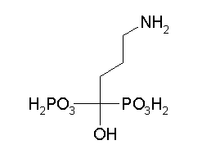Here's another lesson for full disclosure--always tell your health care professional everything you take, whether over-the-counter, food supplement, or prescription. There are many drug interactions that can cause adverse health consequences. Sometimes one medication, supplement, or even a food like grapefruit, can increase or decrease the effectiveness of another drug's intended use (See Running & FitNews, April 1999 and March 2000). In this case, either NSAIDs or Fosamax (a drug for osteoporosis) taken alone can cause gastric ulcers, but both drugs together pack a synergistic punch. Taking the two drugs at the same time produce more than triple the risk for stomach ulcers of either drug alone.
In a study from Baylor College of Medicine, 26 healthy volunteers were randomly assigned to take Fosamax, naproxen, or both drugs together for 10 days, and then were evaluated by endoscopy for evidence of gastric ulcers. Gastric ulcers occurred in eight percent of those taking Fosamax, in 12% of those taking only naproxen, but in 38% of those taking both drugs.
Over 10 million Americans have osteoporosis and another 18 million are at risk due to low bone density Although running is protective to some extent against osteoporosis, overtraining can have the opposite effect when it is part of the Female Athlete Triad in which low estrogen levels can decrease bone density in premenopausal women. To be safe, always be sure to discuss all medications and your lifestyle with your doctor or pharmacist.
(Archives of Internal Medicine, 2000. Vol. 160, No. 5, pp. 705-708; NIH Consensus Statement 111, Osteoporosis, Prevention, Diagnosis and Therapy)
COPYRIGHT 2002 American Running & Fitness Association
COPYRIGHT 2003 Gale Group



